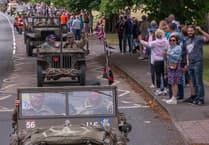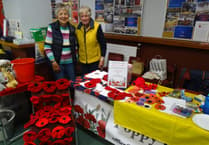THE BATTLE of Cheriton was fought on the fields to the east of the village on March 29, 1644.
It was here that a Parliamentarian army led by Sir William Waller finally halted the Royalist advance out of the south west.
The Royalist army, then under Sir Ralph Hopton, reached Alresford, to the north east of Winchester, the day before the battle.
He deployed his troops on the downs south of Alresford, approximately one mile to the east of the village of Cheriton.
Hopton was then joined by the Earl of Forth and, as senior officer, it was the Earl who took command of the Royalist army.
The night before the battle, Waller’s forces camped close to Hinton Ampner, a short distance to the south.
The Royalist defeat thwarted the plans of King Charles I for an advance upon London and forced Hopton to retreat to Basing House with the bulk of the army, while the Earl of Forth returned to the Royalist capital at Oxford.
In November, Prince Rupert finally superseded the Earl as commander of the King’s armies.
The area of the battlefield is now fully enclosed but remains agricultural land with little development.
Cheriton Wood survives, as do many of the narrow hedged lanes that may have been present at the time of the battle.
There has been considerable argument as to exactly where in this landscape the battle was fought, with Adair disputing the traditional site and suggesting a location to the south, close to Hinton Ampner.
Subsequent metal-detecting survey has produced evidence that suggests the traditional site is the correct one.
This conclusion has been supported by recent work reconstructing the historic landscape.
This shows the location for the large heath referred to in contemporary accounts as the place where the Parliamentarian cavalry deployed can only be on the traditional site.
Access to the battlefield is via an excellent network of footpaths, lanes and minor roads, and a monument was erected in 1975.
There are information boards at the end of Scrubbs Lane (Royalist) and on the bridleway (Parliamentarian) leading up to the battlefield from the Hinton Arms pub.
The battle is re-enacted every year.

.jpeg?width=209&height=140&crop=209:145,smart&quality=75)



Comments
This article has no comments yet. Be the first to leave a comment.